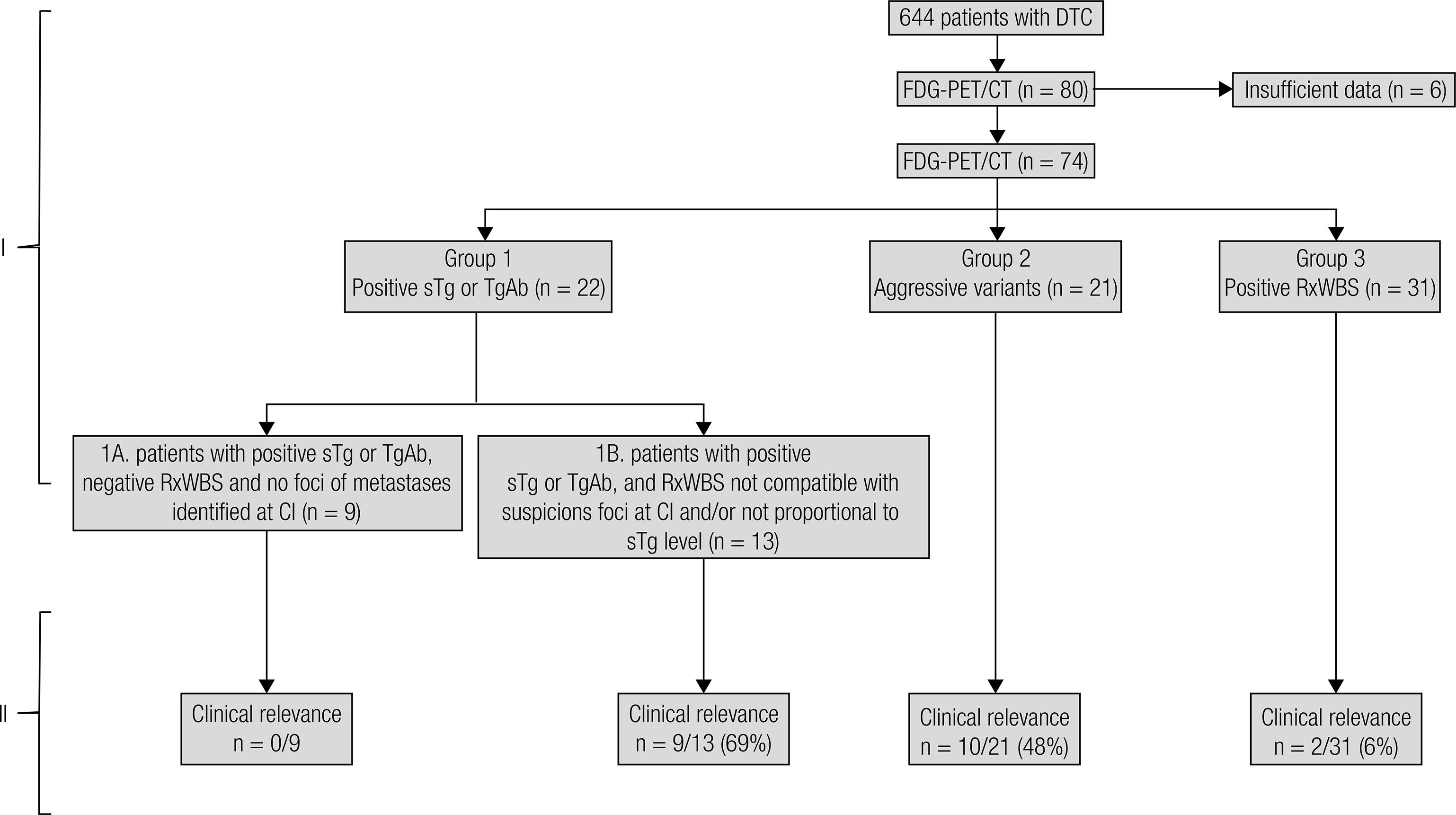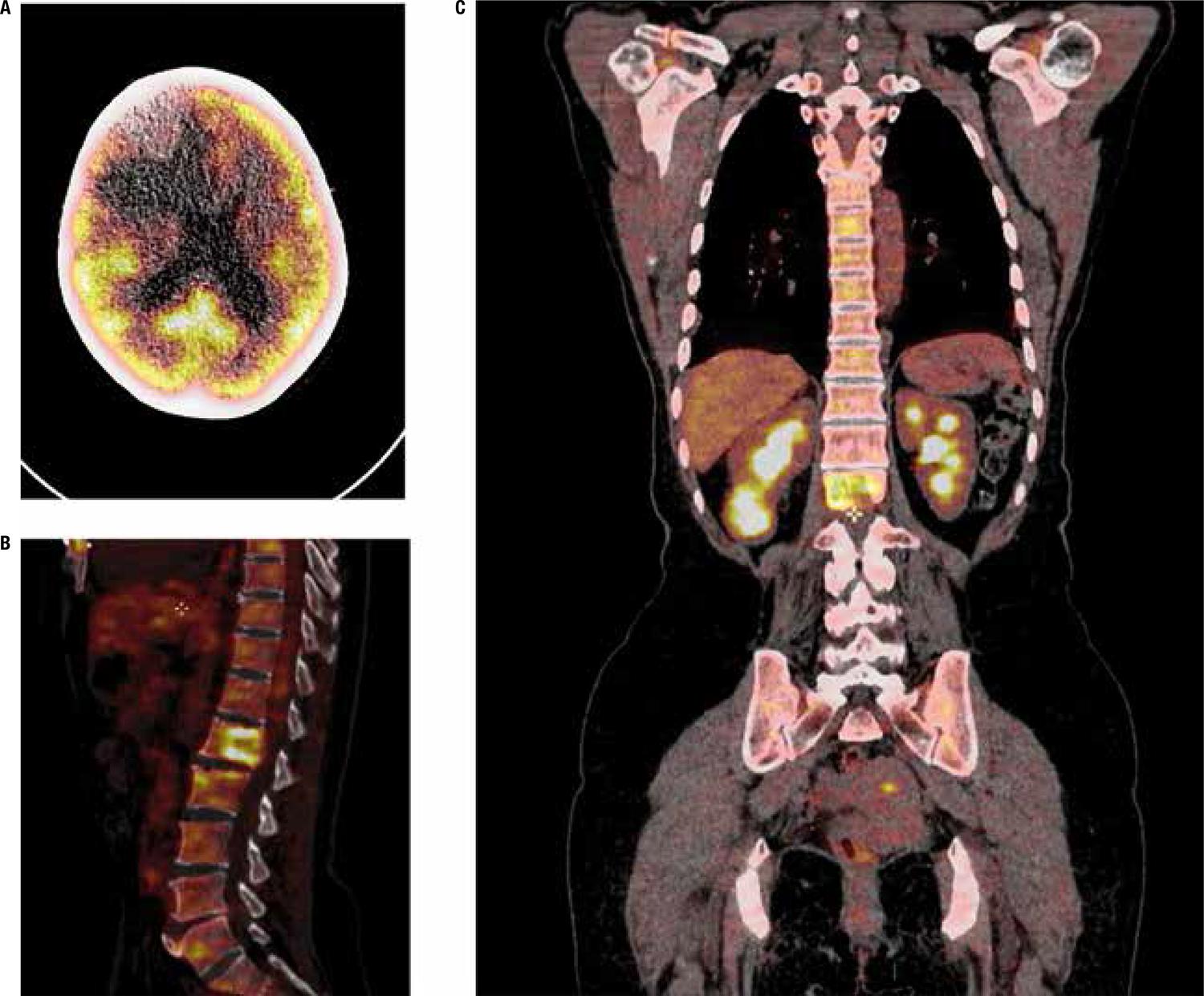ABSTRACT
Objective
To evaluate the clinical utility of 18F-FDG PET/CT in patients with high-risk DTC.
Subjects and methods
Single-center retrospective study with 74 patients with high-risk differentiated thyroid cancer (DTC), classified in 4 groups. Group 1: patients with positive sTg or TgAb, subdivided in Group 1A: negative RxWBS and no foci of metastases identified at conventional image (n = 9); Group 1B: RxWBS not compatible with suspicious foci at conventional image or not proportional to sTg level (n = 13); Group 2: patients with histological findings of aggressive DTC variants (n = 21) and Group 3: patients with positive RxWBS (n = 31).
Results
18F-FDG PET/CT identified undifferentiated lesions and helped restage the disease in groups 1B and 2. The scan helped guide clinical judgment in 9/13 (69%) patients of group 1B, 10/21 (48%) patients of group 2 and 2/31 (6%) patients of group 3. There was no clinical benefit associated with group 1A. 18F-FDG PET/CT was associated with progressive disease.
Conclusion
18F-FDG PET/CT is a useful tool in the follow-up of patients with high-risk DTC, mainly in the group of RxWBS not compatible with suspicious foci at conventional image or not proportional to sTg level and in those with aggressive DTC variants. Additionally, this study showed that 18F-FDG PET/CT was associated with progression and helped display undifferentiated lesions guiding clinical assessments regarding surgeries or expectant treatments.
Differentiated thyroid carcinoma; 18F-FDG PET/CT; radioiodine (RAI); whole-body scan (WBS); thyroglobulin (Tg)


